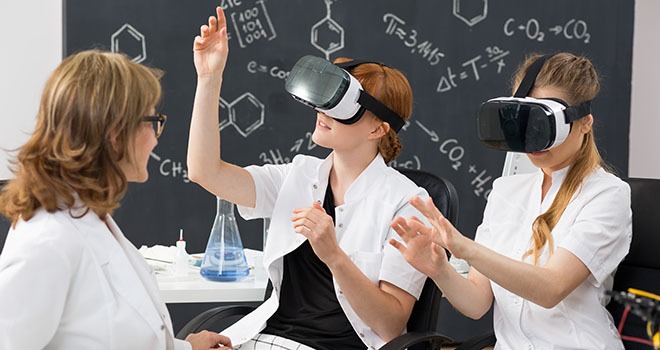
As technology continues to advance, educational methods and practices are rapidly evolving. One area that has seen significant innovation is the application of design thinking in experiential learning through the integration of virtual reality (VR) technology.
Design thinking is a solution-based approach to problem-solving that encourages thinking outside the box and emphasizes understanding end-users. In education, this approach can be transformative, as it promotes creativity and collaboration among students, preparing them for real-world challenges by allowing them to engage deeply with content.
Experiential learning takes this approach a step further by emphasizing learning through experience. Here, students don’t just learn about a subject; they immerse themselves in it. This deep level of engagement results in improved retention of knowledge and a better understanding of real-world applications.
The incorporation of VR technology into design thinking and experiential learning creates a new frontier for education. VR offers an immersive experience unlike any other, allowing students to interact with environments and scenarios that would be impossible or impractical to experience in the real world.
For example, in fields such as medicine, architecture, engineering, and design, VR can simulate complex procedures or visualize intricate structures, giving students a more nuanced understanding of their field of study. By stepping into a virtual environment, learners can experiment, iterate, and understand spatial relationships on a level that traditional educational methods cannot provide.
In architecture education, VR can transport students inside their designs to truly understand how space works on a human scale. Medical students using VR can practice surgical procedures without the risks associated with real-life operations.
Moreover, design thinking involves empathy as a central component—understanding and sharing the feelings of others. VR pushes the boundaries of empathy by allowing learners to experience perspectives and environments very different from their own. Whether it’s simulating challenges faced by people with disabilities or exploring habitats threatened by climate change, VR makes these experiences accessible.
The benefits also extend to soft skills development such as teamwork, communication, and adaptability. Virtual simulations often require team coordination and offer safe spaces to hone these skills—crucial competencies in today’s ever-changing workforce landscape.
However, integrating VR into experiential learning is not without challenges. Access to technology must be democratized so that all learners can benefit regardless of socioeconomic status. Additionally, educators need training to effectively integrate these tools into their curriculum and identify meaningful experiences tied directly to learning outcomes.
In conclusion, combining design thinking with experiential learning through VR offers an exciting opportunity to revolutionize how we teach and learn. By embracing these technologies today, we prepare students for the complexities of tomorrow—arming them not just with knowledge but with evolved methods for its application in any given context. The future is immersive; the future is empathetic; the future belongs to those who engage deeply with it now through innovative educational practices.
